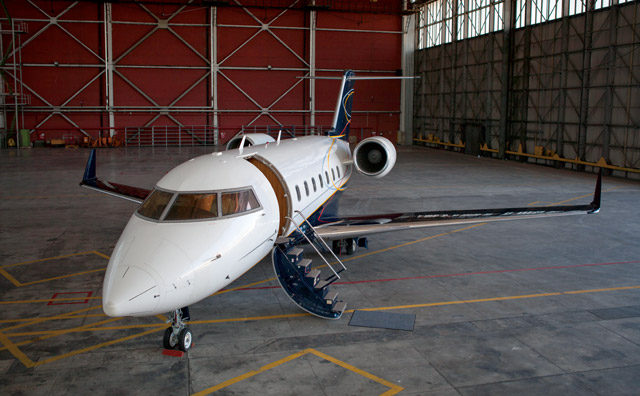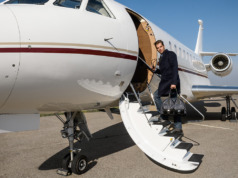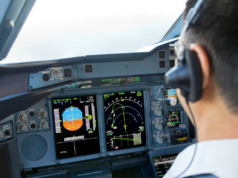
Are you safe? Just because you arrive at your destination with no damage to you, your passengers, or your aircraft, does not necessarily mean that you are “safe.” To be more direct, do you really know whether the outcome of your next takeoff or landing is more reliant on being safe or being lucky?
At first, it might seem that “safety” is binary: either you are or you are not “safe.” But the distinction lies in a much more effective definition: understanding, measuring, and managing “risk.” After all, your core business succeeds or fails on managing risks (market risk, financial risk, production risk, etc.).
Aviation services incur risks during the key processes of maintenance, ground movement, and flight. The business aviation community is not uniform in its management of those operational risks. That is, the quality of the control of all the various risks differs from operator to operator, be they an internal aviation department or a management company.
That places the onus for risk management on you in two ways:
- As the customer, it is your responsibility to define, agree to, and support the risk standards and outcomes you expect to be delivered. The operator’s duty is to perform to your expectations, if he or she wants to retain your business.
- It is up to you, even as a non-aviation professional, to know how your operator is performing.
To gain a very good understanding of how well your aviation services’ risks are being managed, follow these four steps:
Step One:
Define Your Tolerance for Operational Risk
Whether your aviation services are provided by an internal aviation department or outsourced to a management company, it is up to you to define and declare your tolerance for risk. One client defined his risk tolerance in graphic, effective, and personal terms: “I want our aviation services such that I wouldn’t hesitate to have my children or grandchildren aboard on any given day.” Further discussion confirmed that he wanted major airline levels of risk management, or better.
As stated before (see “Safety Guards,” BAA Nov/Dec 2016), a clearer way to look at risk tolerance standards is to define them in practical terms:
- World Class – Guaranteed risk management (no limits on budget and effort).
- Best Practices – Assured risk management (proactive and anticipatory).
- Standard Practices – Prevent failure (compliance with rules and regulations).
- Substandard Practices – Accepts modest risks (bending the rules and regulations).
- Unacceptable Practices – Induces substantial risks (“rampant rhino” behaviors).
From conversations with hundreds of aircraft owners and key passengers, one universal theme emerges: they expect or assume their aviation services are performed to a Best Practices standard, or better. They perceive that standard to be the best bang for the buck. They correctly perceive that Best Practices is a significant improvement over Standard Practices, requiring only the modest added investment in higher standards and performance.
Action: Be clear and direct with your aviation service provider about your risk tolerance and your expectations for their performance.
Step Two:
Implement a Holistic Safety Management System (SMS)
Using your own defined risk tolerance as a foundation, the next step is for the operator to identify, assess, and mitigate operational risks. This is a process done systematically and comprehensively: day-by-day, activity-by-activity, staff member-by-staff member.
Most operators have some form of a Safety Management System (SMS) in place. Yet few attain the extensive benefits of a fully implemented and mastered SMS. This is because most SMS applications either are too narrow (flight operations only) or are not comprehensive enough to achieve their full potential. Financially, your greatest aircraft-related risks are on the ground during parking and maintenance operations. Even so, few operators’ SMSs include those higher risk arenas. Require your operator to have a “holistic” SMS: one that includes all aircraft ground, maintenance, and flight operations.
Action: Ask to see your aviation service provider’s SMS reports for ground, maintenance, and flight operations. If their reports do not cover all operations, challenge them to complete their SMS implementation as quickly and thoroughly as is practical. A comprehensive SMS will greatly benefit them and you.
Step Three:
Measure and Manage SMS’s Results
The critical elements of SMS are:
- The identification of risks,
- Their assessment (the severity of the threat compounded by its probability of occurring),
- The selection of appropriate mitigations, and
- Reassessment to confirm the effect of those mitigations.
The identification-assessment-change-reassessment of risks is the bread and butter of SMS. This process allows your aviation professionals to look forward and to be proactive as they anticipate and deal with potential threats. The old approach was the sole reliance on compliance through the use of rules and regulations derived from the experience gained from previous failures: a hindsight perspective.
You want your aviation service provider to use SMS as a daily tool, rigorously implementing their SMS’s processes and recordkeeping. That discipline allows them to track the impact of their SMS efforts as well as to identify trends or areas that need specific focus for countermeasures.
Action: Schedule meetings with your aviation service provider no less than quarterly to review their SMS scores. You should gain an understanding of the operator’s highest level concerns and issues. Then you can support their efforts to manage their operational risks as you collaborate with them to establish future goals that will further reduce risks and lower scores in critical areas.
Step Four:
Trust and Verify
Two metrics that you, the non-aviation professional, easily can review to determine the quality of your aviation service’s use of SMS are:
- The frequency of reports of significant anomalies (e.g. Hazard and Incident Reports). Rarely is a trip leg flown during which nothing unusual happens (an unexpected risk is experienced and mitigated, spontaneously). Most business aircraft fly 300+ legs per year. Yet, the average number of hazard reports per aircraft, per VanAllen’s research, is about six per year. That means a lot of risk data are not being recorded or used for the greater good.
- The speed with which a hazard is addressed. When a staff member makes the effort to document a risk, it is incumbent upon his or her management team to assure the risk is addressed in a timely manner. The speed of response tells your aviation professionals how serious their leaders are about their SMS. Manageable risks that are written up and quickly resolved tell you and the team the SMS is working and worthwhile.
Action: Since there is always room for improvement, direct your service provider to (1) increase the rate of filed hazard reports for maintenance, ground, and flight operations, and (2) reduce the time between the filing of a risk report and its resolution. These two measurable and reportable actions will significantly enhance the impact of your SMS.
By using these four steps, you should have a very good understanding of how well your operator’s risk management conforms to your expectations. If not, dig deeper or get help. Otherwise, the risks are yours. BAA
Pete Agur, Jr. is chairman/founder of The VanAllen Group, a management consulting firm specializing in the business of business aviation. With an MBA and a BS in Aeronautical Sciences, he is an NBAA Certified Aviation Manager.




